This article was published in the Martinez News-Gazette on 12/3/2017 and is the seventh part of our continuing story about Aaron Rice and his family.When we last wrote, Aaron and his family had gained their freedom from William with the exception of Nathaniel. Aaron succeeded in bringing William to court to force Nathaniel’s release from William’s custody. Alas, the cards were stacked against them and in the end; Nathaniel remained under William’s control. While in the midst of the current holiday season, we wondered what it might have been like for Aaron and his family’s first celebration of Thanksgiving and Christmas as free people. Despite the trial’s outcome, Aaron’s family had many things to be thankful for that year. They were newly minted landowners while living together (with Nathaniel not far away). A signed copy of a September 19, 1860 Napa property deed shows that Aaron’s wife, Charlotte, and his father, Robert, purchased 160 acres of land from a William Russell for $100. In 1860, it was rare for African Americans to own California real estate. Also, it was the last Christmas prior to the Civil War. 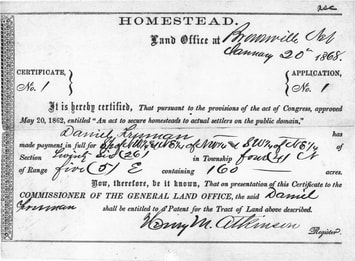 US Government Dead for Federal Land US Government Dead for Federal Land Although we have not yet found any information on William Russell, we have a theory on how he acquired the property. The U.S. Preemption Act of 1841 allowed individuals to acquire up to 160 acres of federal land at the government price of $1.25 an acre ($200 total), before it went to auction. To keep the parcel, he would have needed to live on it for five years while making constant improvements. The U.S. California Survey Act of 1853 stated that only surveyed (defined as improved) property could be purchased or offered for sale with few exceptions. Since most of California had not been surveyed, real estate acquisition was therefor made more difficult. Perhaps, Mr. Russell in the late spring of that year hired Aaron’s family to work his land allowing a natural connection to be made. At this time, we do not know what Aaron and his family grew on the 160-acre farm, but they were familiar with growing and harvesting wheat, fruit, and nuts among other crops. With their combined savings, and most likely Mr. Russell moving out of the area, Charlotte and Robert Rice were able to purchase the parcel. Aaron most likely was left off the deed due to his record acquired from William’s trial. 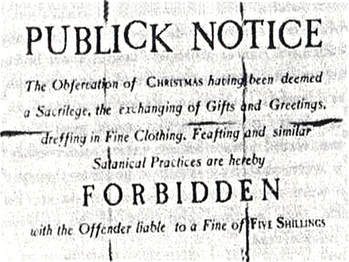 1659 Boston Public Notice 1659 Boston Public Notice As for the Holidays, we were curious to know what they might have been like for Aaron’s family during their enslavement in North Carolina and Missouri. Pre-Civil War traditions between the North and South were very different. We found most Northern states emphasized Thanksgiving while the South focused on Christmas. In addition, before Christmas became a federal holiday in 1870, it was not celebrated by all Christian faiths and in fact was actually illegal in the U.S. to do so. Indications perhaps of a religious civil war already occurring throughout the United States. (For example, Alabama was the first state to legalize Christmas in 1836.) Therefor, the Slave-owner’s religious beliefs might have determined whether their slaves received any special privileges. 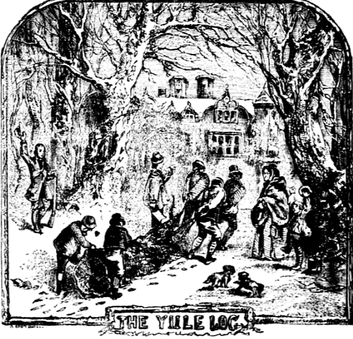 Robert Chambers Illustration (1864) Robert Chambers Illustration (1864) According to information we collected, if a slaveholder during 19th Century America was Anglican, Moravian, Dutch Reformed, Lutheran, Catholic or Episcopalian, they observed Christmas. For the enslaved, it might have meant a better cut of meat, days off as long as the Yule log they had to fetch burned, permission to visit family at other plantations, or keeping the extra money they made during Christmas. The in-house slaves would not have had these so-called luxuries as they would have worked as butlers, maids, cooks and servants for the lavish parties their slave-owners held. Quaker, Puritan, Separatist, Baptist, Presbyterian or Methodist Slaveholders did not celebrate Christmas. Up to the middle of the 1800s, Baptists viewed partying, dancing, and merry making as unchristian and preferred the removal of Christmas from Christianity. Methodist and Baptist churches were closed, as the day was not considered a holy one. After moving to Missouri, William Rice and his family became Baptists in 1833. If Archibald and William were true Baptists, we can speculate that Aaron and his family had to work through Christmas and received no special privileges. Instead, there might have been a great deal of prayer. 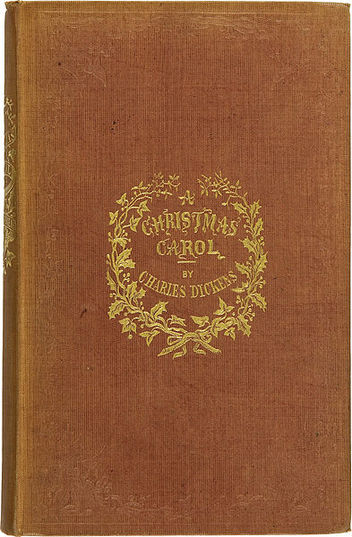 First Edition Cover (1843) First Edition Cover (1843) Can you imagine the mixture of emotions Aaron’s family experienced in 1860 knowing that they now had choices without the dictates of a slave-owner? Napa was populated with a mish mosh of Northerners, Southerners, and residents from foreign countries, each with their own traditions. From the early 1800s, Spanish\Mexicans celebrated Christmas by going to midnight mass and holding grand fiestas during the next several days. The silver rush of 1858 brought many Europeans to the Napa valley holding beliefs of “good will towards men” much like in Charles Dickens “A Christmas Carol” published in 1843. While Germans brought their tradition of the evergreen (Christmas tree). From various Napa church records, we found the existence of the First United Methodist, First Presbyterian, and the First Baptist (started that year). As noted earlier, William Rice and his family probably attended Napa’s First Baptist church before moving to Walnut Creek. Also noted earlier, all three churches were unlikely to celebrate Christmas. To understand what food may have been served during these joyful events, we explored Napa’s agriculture at the time. Napa was not only known for its grapes and cattle ranching, but was one of the largest contributors of wheat, barley and oats. It was also known for fruit orchards such as apples, apricots, peaches, and pears along with olives, walnuts, almonds and tomatoes. Other available meat would have included chicken, wild turkey, pig, sheep and fish. If Aaron and his family did celebrate Christmas, they might have decorated their home with wild berries, evergreen boughs, fruits, nuts and homemade paper decorations. They would have had the freedom to celebrate with other African Americans and been treated to turkey, beef or boiled ham. Side dishes might include potatoes, onions and pickled items. For dessert, it would have been fruit pies, mince pie, and homemade bread lathered with jam. Our wish for all of our readers is to “have the choice on how to spend this holiday season, have plenty to eat, and be among good people.” Happy Holidays! Judie & Joseph Palmer are two of the founding members of the Martinez Cemetery Preservation Alliance (MCPA) and the Potter’s Field Project. Both have a passion for discovery, history, genealogy, anthropology and archaeology. For more info, please visit our website MartinezCemetery.org. Do you have a Potter’s Field story to tell? We welcome any pictures or information regarding the Alhambra Pioneer Cemetery or its Potter’s Field. Please email us at [email protected] or call us at (925) 316-6069.
|
AuthorsJudie & Joseph Palmer are two of the founding members of the Martinez Cemetery Preservation Alliance (MCPA) and the Potter’s Field Project. Both have a passion for discovery, history, genealogy, anthropology and archaeology. Archives
October 2021
Categories |

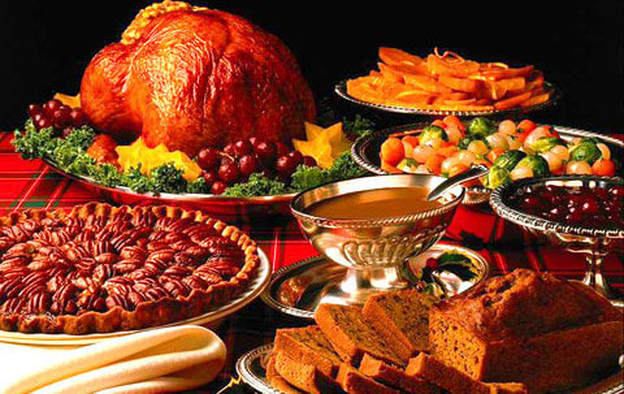
 RSS Feed
RSS Feed